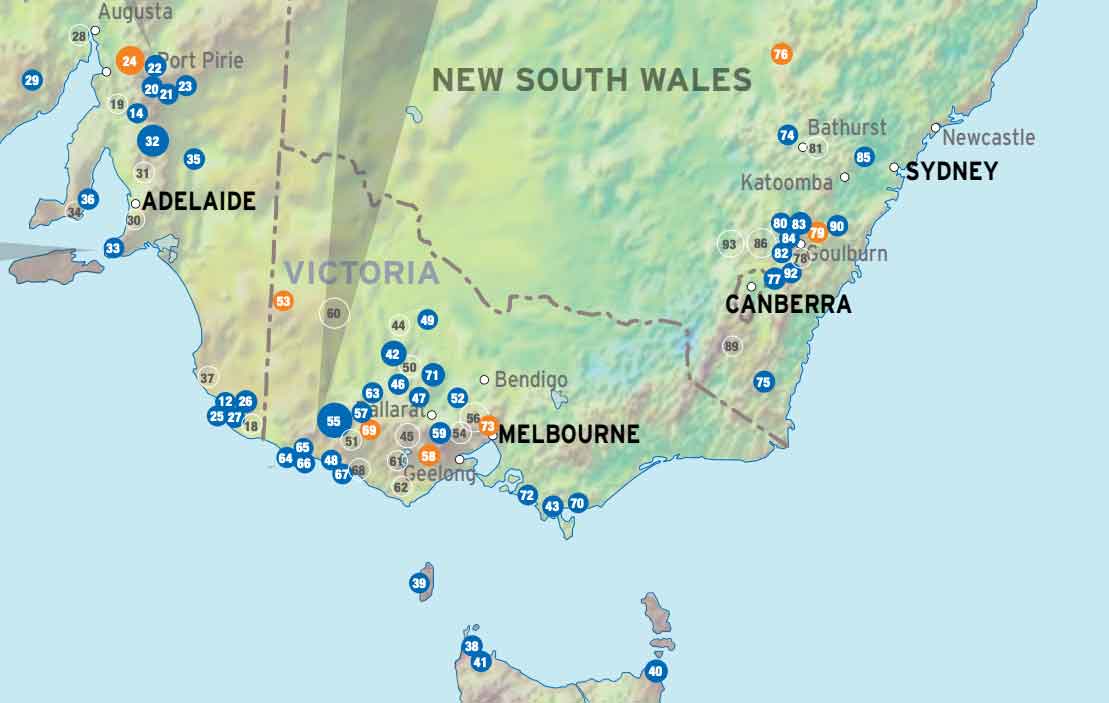A study found wind farms may slow drafts for 50km – and one downwind operator lost $US2m

Pic: Bloomberg Creative / Bloomberg Creative Photos via Getty Images
A new study out of Texas indicates that wind farm ‘wake effects’ may be more important than expected, and have a much bigger effect on the commercial viability of projects.
With Australia’s wind farms clustered in certain areas in each state, this could have an impact on which farm will produce to its fullest capacity — and which won’t.
The study, published in Nature Energy, suggest that wind farms can slow the winds in their wake for over 50km.
The study looked at the 250 megawatt (MW) farm called Loraine that was built upwind from the mammoth 781.5MW Roscoe project, in West Texas.
“We show that although wake effects vary with atmospheric conditions, they are discernible in monthly power production. In stably stratified atmospheric conditions, wakes can extend 50+ km downwind, resulting in economic losses of several million dollars over six years for our case study,” said the report, titled Costs and consequences of wind turbine wake effects arising from uncoordinated wind energy development.
It estimates that the downward Roscoe farm may have lost as much as $US2m in lost electricity production.
A wake or turbulence effect is not a new phenomena, but the size of the impact cited in the Nature study is.
As long ago as 2003 government researcher CSIRO warned of wake effects, or the slower, more turbulent air downwind from a wind project, but suggested the problem only existed for about 10 turbine blade lengths away.
“This will obviously have an effect on any other turbine placed nearby when the wind is blowing directly in a line between the two,” it said in a planning guide.
A problem in Australia?
Australia’s wind farm clusters are in South Australia, Victoria, and NSW, according to an EcoGeneration map of planned, under construction, and operating projects in January this year.
The owners are a mix of local and foreign operators, and include Windlab (ASX:WND), Tilt Renewables (ASX:TLT), Infigen (ASX:IFN), AGL (ASX:AGL) and Meridian (ASX:MEL).
Windlab’s Kiata farm, out on the Victoria border with South Australia, is one of the best performing farms in the state.

As yet there appear to be no state or federal guidelines which factor a turbulence or wake effect into the approval process for wind farm development.
Green Energy Markets director Tristan Edis doesn’t believe it’s an issue unless the upwind farm is enormous.
“If the project was really big, maybe that effect would be at play but there are a number of areas where there are a concentration of wind farms, say in South Australia, north of Adelaide,” he told Stockhead.
“You can see even in a single wind farm there are turbines not that far from each other and they perform very well in spite of that.”
He says planning mistakes, rather than other farms positioning themselves upwind, are more of an issue in Australia.
- Subscribe to our daily newsletter
- Bookmark this link for small cap news
- Join our small cap Facebook group
- Follow us on Facebook or Twitter
He compared the 240MW Ararat windfarm, to Windlab’s 30MW Kiata, as an example of a farms that are well designed, and those that aren’t.
Mr Edis says Ararat, which switched up to run at full capacity last year, in 2018 to date has only managed a capacity factor of 28.4 per cent.
Capacity factor is the amount a wind farm produces compared to the nameplate volume.
The Kiata farm has a capacity factor this year of 49.1 per cent.
Energy data site Aneroid says average capacity factor for wind projects in southeast Australia is 30-35 per cent.
UNLOCK INSIGHTS
Discover the untold stories of emerging ASX stocks.
Daily news and expert analysis, it's free to subscribe.
By proceeding, you confirm you understand that we handle personal information in accordance with our Privacy Policy.








